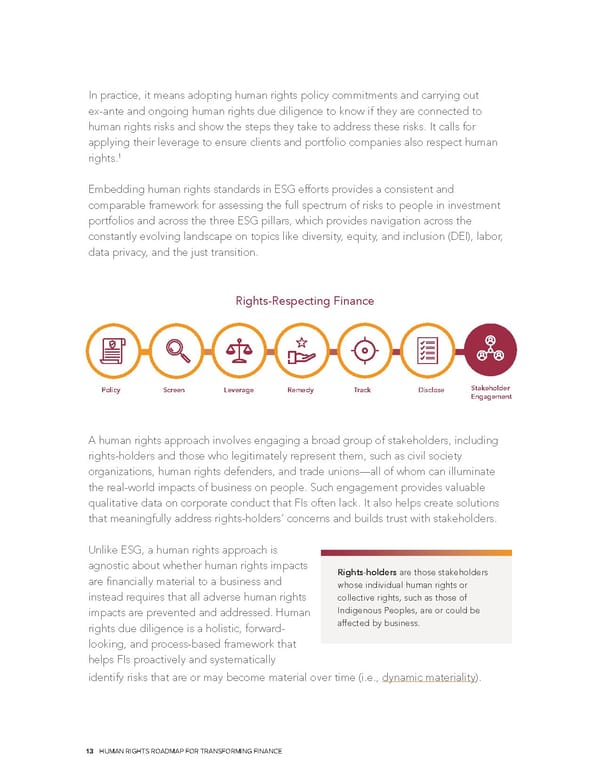In practice, it means adopting human rights policy commitments and carrying out ex-ante and ongoing human rights due diligence to know if they are connected to human rights risks and show the steps they take to address these risks. It calls for applying their leverage to ensure clients and portfolio companies also respect human 1 rights. Embedding human rights standards in ESG efforts provides a consistent and comparable framework for assessing the full spectrum of risks to people in investment portfolios and across the three ESG pillars, which provides navigation across the constantly evolving landscape on topics like diversity, equity, and inclusion (DEI), labor, data privacy, and the just transition. Rights-Respecting Finance Policy Screen Leverage Remedy Track Disclose Stakeholder Engagement A human rights approach involves engaging a broad group of stakeholders, including rights-holders and those who legitimately represent them, such as civil society organizations, human rights defenders, and trade unions—all of whom can illuminate the real-world impacts of business on people. Such engagement provides valuable qualitative data on corporate conduct that FIs often lack. It also helps create solutions that meaningfully address rights-holders’ concerns and builds trust with stakeholders. Unlike ESG, a human rights approach is agnostic about whether human rights impacts Rights-holders are those stakeholders are financially material to a business and whose individual human rights or instead requires that all adverse human rights collective rights, such as those of impacts are prevented and addressed. Human Indigenous Peoples, are or could be rights due diligence is a holistic, forward- affected by business. looking, and process-based framework that helps FIs proactively and systematically identify risks that are or may become material over time (i.e., dynamic materiality). 13 HUMAN RIGHTS ROADMAP FOR TRANSFORMING FINANCE
 Human Rights Roadmap for Transforming Finance Page 12 Page 14
Human Rights Roadmap for Transforming Finance Page 12 Page 14